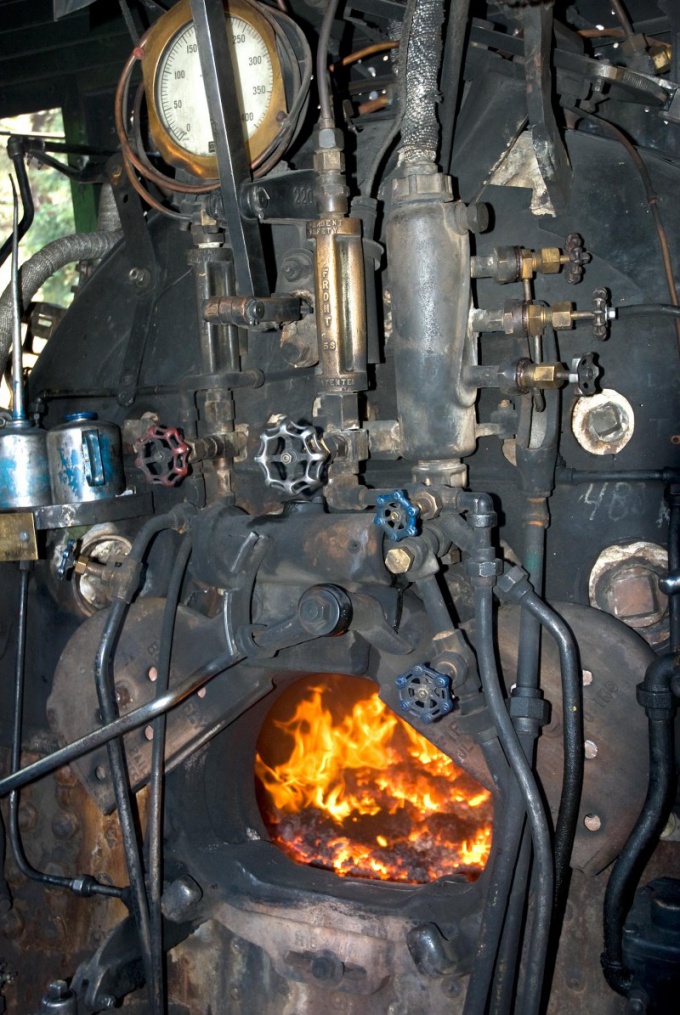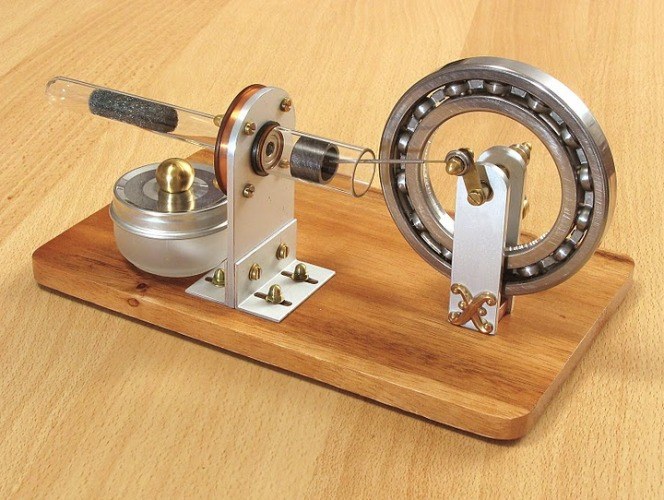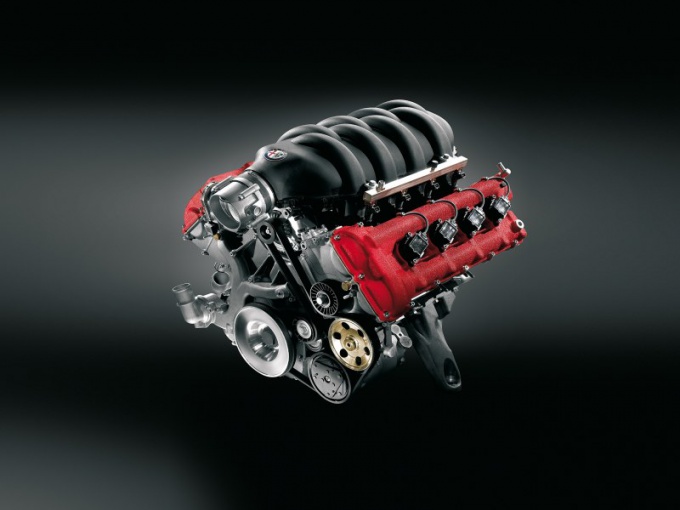Tip 1: How Thermal Engines Work
Tip 1: How Thermal Engines Work
Function of heat engines - conversionthermal energy into useful mechanical work. The working body in such installations is gas. He presses hard on the turbine blades or on the piston, driving them. The simplest examples of thermal engines are steam engines, as well as carburettor and diesel internal combustion engines.

Instructions
1
Reciprocating thermal engines have in theirconsisting of one or more cylinders, inside which is a piston. The expansion of hot gas occurs in the volume of the cylinder. In this case, the piston moves under the influence of gas and performs mechanical work. Such a heat engine converts the reciprocating motion of the piston system into a shaft rotation. For this purpose, the engine is equipped with a crank mechanism.
2
Thermal engines of external combustion areSteam machines in which the working medium is heated at the time of burning fuel outside the engine. Heated gas or steam under strong pressure and at high temperature is fed into the cylinder. The piston thus moves, and the gas gradually cools down, after which the pressure in the system becomes almost equal to the atmospheric pressure.
3
The exhausted gas is removed from the cylinder, inwhich is immediately served the next portion. To return the piston to its initial position, flywheels are used which attach to the crank shaft. Such thermal motors can provide single or double action. In engines with a double action per revolution of the shaft, there are two stages of the working stroke of the piston, in single-action installations the piston performs one stroke at the same time.
4
The difference between internal combustion engines andof the systems described above is that the hot gas here is obtained by burning the fuel-air mixture directly in the cylinder, and not outside it. Submission of the next portion of fuel and removal of waste gases is carried out through the valve system. They allow you to supply fuel in strictly limited quantities and at the right time.
5
Source of heat in internal combustion enginesChemical energy of the fuel mixture. For this type of heat engine, a boiler or an external type heater is not needed. As the working fluid there are a variety of combustible substances, of which the most common are gasoline or diesel fuel. The disadvantages of internal combustion engines include their high sensitivity to the quality of the fuel mixture.
6
Engines of internal combustion in itsDesigns can be two- and four-stroke. Devices of the first kind are simpler in design and not so massive, but with the same power they require significantly more fuel than four-stroke ones. Engines, whose work is built on two bars, is most often used in small motorcycles or lawn mowers. More serious machines are equipped with four-stroke thermal motors.
Tip 2: How to absorb energy
The absorption of energy by matter causes eitherits transformation into heat, or transformation into another form. In the second case, some of the energy is also converted into heat, since the efficiency of any physical system can not exceed unity.

Instructions
1
To absorb light energy, it is necessarya substance that is opaque and non-reflective for radiation with a selected wavelength. For example, blue light is absorbed by red objects, and vice versa. Black objects absorb the light rays of the entire visible spectrum. Note, however, that an object that appears to a dark human eye can be bright for invisible rays (infrared, ultraviolet), and vice versa. Thus, it is established that the human skin of any color appears in infrared light white, and ordinary window glass poorly passes short-wave ultraviolet rays. That light radiation, which is not reflected from the object and has not passed through it, will be absorbed by it and become heat.
2
Some physical instruments allow the accumulation of light Energy or transform it into other types of energy. So, for example, if you focus the sun's rays on a black-painted cylinder of the Stirling engine, it will heat up and start moving. Direct the light to the zinc sulphide layer, and then stop lighting - and within a few minutes this layer will emit a small portion of the absorbed energy back in the form of light. Solar battery, absorbing light Energy, turns it into an electrical one. The efficiency of all these converters rarely exceeds 10 percent.
3
It is possible to absorb not only light, but also thermal Energy. To accumulate a large amount of heat in a smallvolume, take the metal cylinder, fill it with paraffin and seal it. If such a heat accumulator is heated, they can then be used for a long time as a heating pad. It is on this principle that the thermalbags work. To convert a portion of the absorbed heat energy into electrical energy, use a thermocouple. Finally, thermal engines of the most diverse designs allow partial conversion of a portion of the absorbed thermal energy into electrical energy.
4
A battery is a device that absorbs an electrical Energy and part of it turns into heat, and the other part - into internal (chemical) Energy, which it stores inside itself. Connect the load to it, and he will give it to him. Energy. You can charge and discharge the battery many times. Electric motors in the absorption of electrical energy convert some of it into a mechanical one, and electric light sources into a radiant one.
5
To absorb the kinetic energy,represented in the form of vibrations, and its transformation into thermal shock absorbers serve. There are shock absorbers combined with power generators. Unlike classical generators, they do not contain rotating parts - all of their parts are moved back and forth. In such devices, some of the absorbed vibration energy is converted into an electricEnergy However, conventional generators perform a similar task - only the way it transfers kinetic energy for absorption is different. All microphones absorb Energy acoustic waves, but only some of themtransform some of it into electrical - dynamic, tape, piezoceramic. Other microphones - carbon, electret with built-in amplifier - all absorbed acoustic Energy converted into heat completely. They only control under the influence of the adopted oscillations a more powerful flow of electric energy supplied from the outside.
Tip 3: How to generate energy
According to the law of conservation of energy, it is impossible to work out the latter. You can only transfer it from one species to another. There is a significant number of ways to implement such a transformation.

Instructions
1
In order to convert the chemical Energystored in a combustible substance, in a thermal substance, burn it. Part of the energy will be released as light.
2
Turn thermal Energy in the mechanical can be two ways. To take advantage of the first of them, burn the substance in a limited amount. Increase the pressure that this will occur, use to move the object. It is on this principle that the internal combustion engine works. To convert thermal energy into mechanical energy in a second way, place a liquid substance in a limited volume and heat it in any way (not necessarily by burning anything) to the boiling point. The resulting steam is sent to the steam engine or turbine.
3
To convert mechanical energy intoelectrical construct a mechanism in which the movable coil moves past the stationary magnet, or vice versa. There are many designs of such mechanisms, which are called generators.
4
In order to convert the electrical Energy in mechanical, use the electric motoror other design. Remember that, despite the reversibility of electromagnetic phenomena, not any generator can be used as an engine, but only one in which conditions are created when a voltage is applied to create a rotating magnetic field. For example, in a collector motor, constant rotation is provided by automatic switching of the windings, and in an asynchronous rotating magnetic field occurs due to the feeding of the stator windings with a three-phase alternating current.
5
To convert electrical energy intouse a variety of light sources: incandescent, fluorescent, LED, etc. The last two types of light sources should be used in conjunction with current limiting devices.
6
To generate thermal energy from electricuse powerful resistors. This is, perhaps, the only energy converter with efficiency close to 100%. In all other cases, part of the energy in the transformation is inevitably lost to the release of heat.







